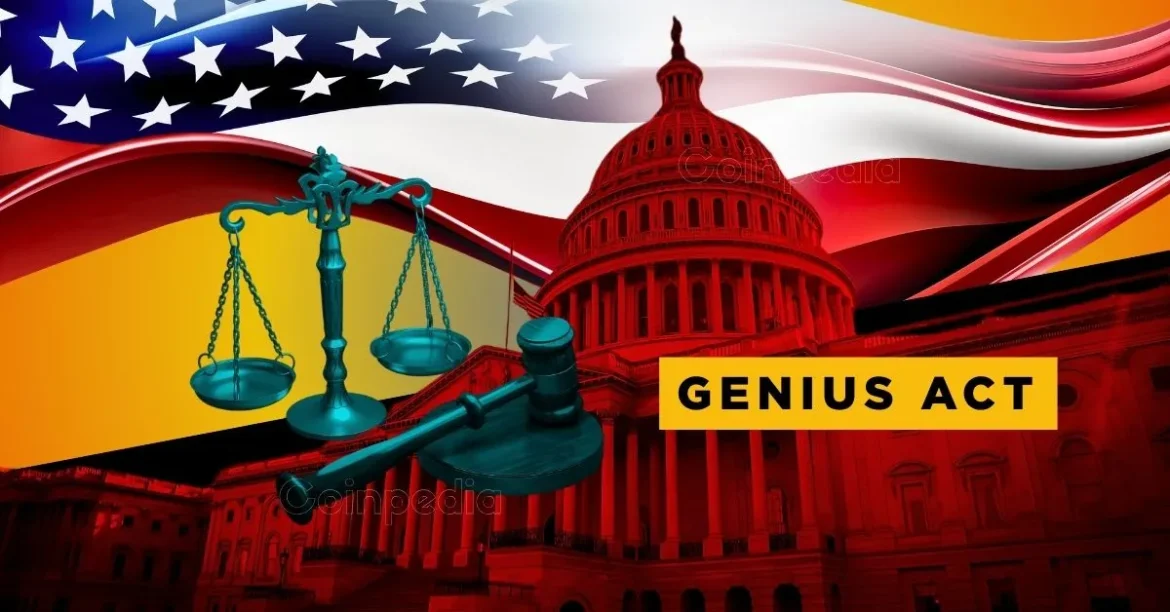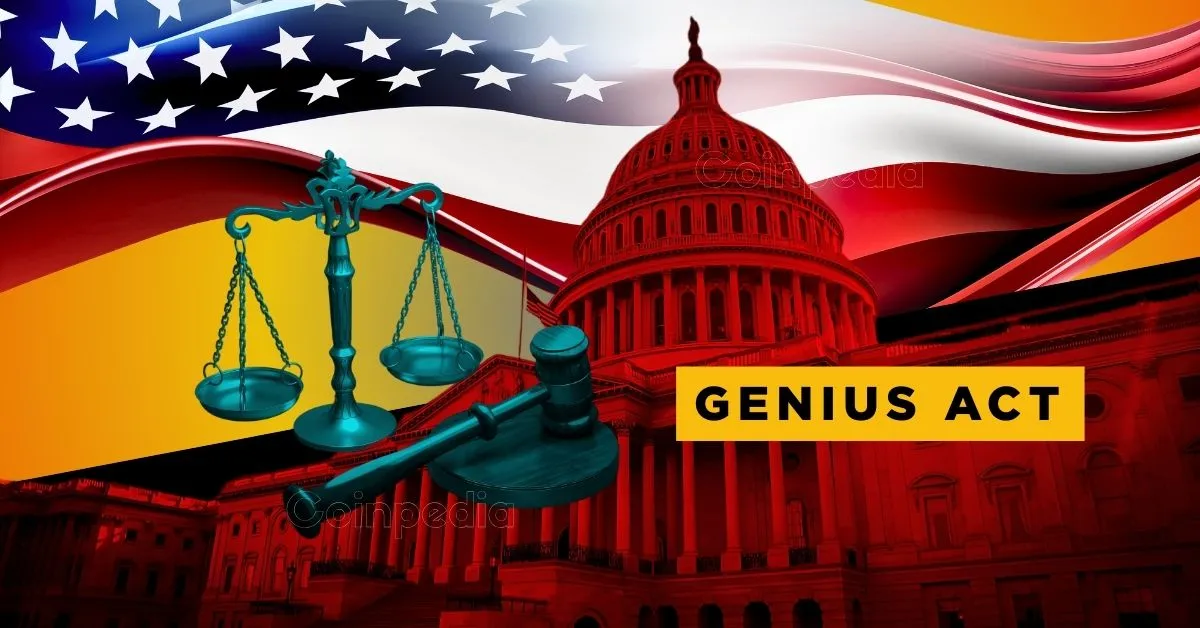The recent momentum around the GENIUS Act marks a pivotal moment in the regulatory landscape for stablecoins and the broader cryptocurrency industry in the United States. After a tumultuous legislative journey marked by opposition, political recalibration, and significant amendments, the bill has now passed a crucial Senate procedural vote with a 66-32 bipartisan majority, renewing prospects for its imminent passage and subsequent federal regulation. This report delves into the content, implications, and potential outcomes of the GENIUS Act’s advancement, framing its significance within the evolving crypto ecosystem.
The GENIUS Act: Framework and Provisions
The “Guiding and Establishing National Innovation for U.S. Stablecoins of 2025” (GENIUS Act) introduces the first comprehensive federal regulatory framework specifically tailored for stablecoins—cryptocurrencies pegged to the U.S. dollar or other fiat currencies designed to provide price stability. The bill aims to address systemic risks associated with stablecoins, safeguard consumers, and promote industry innovation in a rapidly growing $250 billion market.
Core Requirements
– Full 1:1 Fiat Backing: The bill mandates that all stablecoins maintain a full reserve backing in fiat assets, ensuring the digital tokens are redeemable at face value and minimizing sudden devaluation risks.
– Monthly Audits and Transparency: Frequent, comprehensive audits are required to verify reserve holdings, fostering transparency and trust among users and regulators alike.
– Clear Redemption Rules: The legislation stipulates explicit redemption processes that protect holders’ rights, providing clarity and consumer protection in times of market distress or issuer financial instability.
– Restrictions on Yield-Bearing Stablecoins: Importantly, it bans yield-bearing stablecoins, aiming to eliminate risky incentive structures that could create vulnerabilities or regulatory arbitrage.
– Thermostats on Big Tech Involvement: Limits are imposed on the extent to which large technology companies can issue or control stablecoins, addressing antitrust and competition concerns.
These provisions collectively seek to eradicate “shady or risky” stablecoins from the market, which have been associated with scams, sudden collapses, and unchecked speculation, particularly harmful to ordinary consumers and potentially disruptive to the broader financial system.
Legislative Path and Bipartisan Shift
The GENIUS Act initially faced significant resistance, including a failed procedural vote less than two weeks before its successful advancement. Several Democrats had initially united to block the measure, citing concerns over loosening restrictions that might benefit certain high-profile crypto players or former political figures. However, through negotiation, the bill’s sponsors introduced amendments that strengthened consumer protections, enhanced oversight mechanisms, and clarified regulatory boundaries, assuaging many opponents.
The renewed procedural vote—critical to advancing the bill beyond debate towards a final Senate floor vote—secured overwhelming bipartisan support (66 senators in favor compared to 32 against), a notable development reflecting shifting political dynamics on cryptocurrency regulation. This bipartisan momentum is attributed largely to:
– The bill’s balanced approach between innovation-friendly policies and rigorous risk controls.
– The growing recognition of the stablecoin market’s systemic importance to U.S. dollar dominance and payment infrastructure modernization.
– Strategic concessions addressing concerns about executive profiteering via stablecoins and the influence of big technology firms.
Senate Majority Leader John Thune’s expedited motion to bring the bill to a floor vote further underscores Senate leadership’s commitment to passing the regulation promptly.
Implications for Key Stakeholders
For the Crypto Industry and Stablecoin Issuers
If the GENIUS Act passes fully, it will mark a paradigm shift for stablecoin issuers, who must now comply with federally mandated reserve requirements, audit transparency, and operational conduct standards. This increased regulatory certainty could encourage institutional investors and large financial institutions to engage more confidently with crypto payments and innovations, driving adoption and market maturation.
Notably, established issuers like Tether (USDT), the largest stablecoin by market cap, will face scrutiny under the new law’s reserve and audit mandates. This could pressure issuers to enhance transparency, potentially reducing market opacity that has fueled skepticism.
The bill also paves the way for participants like Ripple (XRP) to benefit from a clearer regulatory environment. Analysts speculate that Ripple’s proposed stablecoin (RLUSD) could capture a substantial market share—up to 50% of Tether’s $150 billion cap—if the GENIUS Act facilitates healthier competition within regulated boundaries.
For Consumers and Institutional Users
Consumers stand to gain from safer, more reliable stablecoins due to mandated reserves, regular audits, and explicit redemption rights. This reduces the chance of sudden depegging events and protects everyday users from losses tied to issuer insolvency or fraudulent schemes.
For billion-dollar institutions and payment processors, the legislation promises clearer rules of engagement and regulatory certainty, encouraging adoption of stablecoins as payment rails, liquidity instruments, or settlement tools within the digital economy.
For Policymakers and the Financial System
The GENIUS Act represents a significant step towards integrating cryptocurrencies into the mainstream financial framework while protecting the U.S. dollar’s global competitiveness. Federal regulation could prevent unregulated stablecoins from becoming vectors of systemic risk or tools for illicit finance by establishing consistent national standards rather than a patchwork of state laws.
Moreover, the bill’s limitations on Big Tech involvement signal attention to preserving competitive markets and avoiding undue concentration of financial power in a few technology conglomerates.
What Comes Next?
With the recent procedural vote surmounted and bipartisan support solidified, the GENIUS Act is poised for full Senate floor consideration and passage in the coming days. Subsequent steps include:
– Senate Floor Vote and Final Passage: Expected imminently, pending no further major procedural delays.
– House of Representatives Consideration: The House has previously passed similar stablecoin legislation (“STABLE Act”); alignment here could hasten enactment.
– Presidential Signing: Upon Congress approval, the bill awaits the President’s signature to become law.
– Implementation and Oversight: Agencies such as the Treasury and the Federal Reserve will oversee rulemaking, enforcement, and compliance structures.
– Market Response and Industry Adaptation: Issuers and users will need to adjust operational models promptly to meet compliance deadlines and audit requirements.
The GENIUS Act’s passage will undoubtedly catalyze a safer, more robust stablecoin ecosystem, while fostering innovation within a clearer, federally coordinated regulatory environment.
Conclusion: A Turning Point for Stablecoins and Crypto Regulation
The advancement of the GENIUS Act in the Senate is more than a legislative milestone; it symbolizes the U.S. government’s recognition of stablecoins as a vital component of the future financial infrastructure. By enacting stringent backing, audit, and consumer protection requirements, the bill sows the seeds for increased trust and stability in a sector often marred by volatility and opacity.
Bipartisan consensus around this nuanced regulatory approach illustrates a maturing political understanding of how to balance innovation with oversight, economic growth with risk mitigation, and private initiative with public interest. As stablecoins transition from an ambiguous niche to a regulated mainstream tool, the GENIUS Act stands to reshape the trajectory of American cryptocurrency policy and market development fundamentally.
The next few weeks in Congress will finalize the bill’s fate, but its successful procedural passage marks a historic step toward transforming stablecoins into safe, transparent, and widely accepted instruments in the digital economy. This evolution not only protects consumers and investors but also empowers innovation that could redefine payments, remittances, and digital assets for decades to come.





